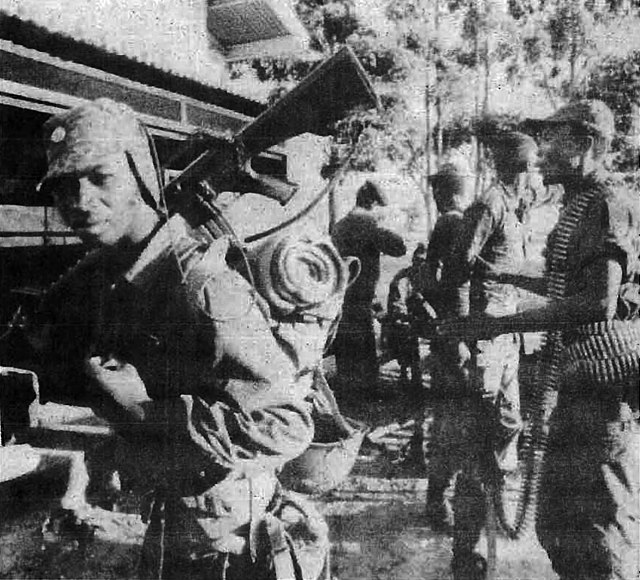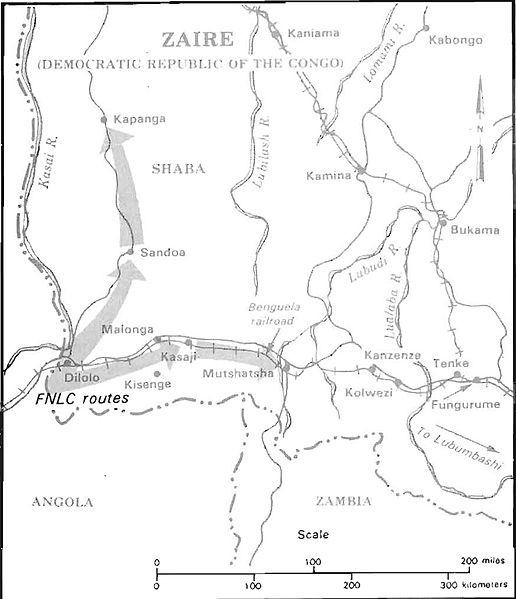Shaba I was a conflict in Zaire's Shaba (Katanga) Province lasting from 8 March to 26 May 1977. The conflict began when the Front for the National Liberation of the Congo (FNLC), a group of about 2,000 Katangan Congolese soldiers who were veterans of the Congo Crisis, the Angolan War of Independence, and the Angolan Civil War, crossed the border into Shaba from Angola. The FNLC made quick progress through the region because of the sympathizing locals and the disorganization of the Zairian military. Travelling east from Zaire's border with Angola, the rebels reached Mutshatsha, a small town near the key mining town of Kolwezi.
Zairian troops with a beret-wearing Moroccan military advisor
Mobutu with Nixon, 1973
FNLC movements, 1977
Fidel Castro denied accusations of Cuban involvement in Zaire and called Mobutu "desperate" for Western assistance.
Zaire, officially the Republic of Zaire, was the name of the Democratic Republic of the Congo from 1971 to 1997. Zaire was located in Central Africa and was, by area, the third-largest country in Africa after Sudan and Algeria, and the 11th-largest country in the world from 1965 to 1997. With a population of over 23 million, Zaire was the most populous Francophone country in Africa. Zaire played a central role during the Cold War.
Mobutu Sese Seko, the president of Zaire from 1965 to 1997
Idi Amin, president of Uganda, visiting Mobutu in Zaire during The Shaba I Conflict in 1977
This is a 5 makuta (cinq makuta) coin from Zaire, 1977, which portrays Mobutu Sese Seko, who was the president during this time







